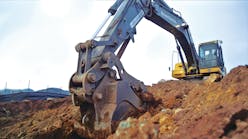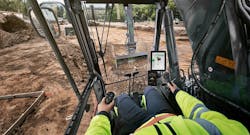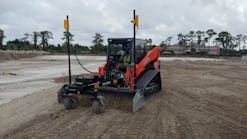Back in the 1980s my mother invested in a couple dozen arcade video games and put them in a number of arcade establishments, convenience stores, and laundromats. Every other weekend I would go with her to empty the quarters out of each game. It was a phenomenal, all-cash business endeavor. But like most good things, it came to an end.
By the mid-1990s, the technology of home game consoles and personal computers had advanced beyond the typical arcade video game. Add to that the Internet that makes social gaming possible, and “poof,” video arcades became a thing of the past.
I see this as a case of emerging technology (arcade games) evolving into advanced technology (home consoles), and then advancing even further (Internet social gaming).
I’m trying to figure out if the same kind of linear evolution is taking place in the dirt moving industry. Obviously, there have been stunning advancements made in telematics and machine control. BIM and job site management software continues rapid development. And now the use of augmented reality (AR) and mixed reality is coming into play.
GCN is a website that offers “technology assessments, recommendations, and case studies to support Public Sector IT managers who are responsible for the specification, evaluation, and selection of technology solutions.”
A recent article on the website talked about augmented reality improving highway construction. AR apps are already being tested in construction sites across the country. The use of the technology has prompted the Federal Highway Administration (FHWA) to take a closer look at the technology.
Matt Leonard reports that, “The FHWA wants to know if AR can address quality assurance issues, communications among project participants, and management of highway infrastructure assets and has issued a call for a study.
“AR has a potential to reduce the construction cost, improve the delivery time, and assist with overall management of a construction project,” the agency said in a recent sources sought notice.
FHWA wants to conduct a comprehensive study of available AR technology and assess its reliability and practical applications to help determine how it can be applied for construction management. The study is expected to explore advantages, limitations and costs of using AR as well as future challenges with the technology.
Specifically, the FHWA wants to document methodologies used to store, retrieve and archive the big data generated by AR. It also plans to conduct case studies to encourage wider use of AR in highway construction management.”
So, where would you say this falls in the “evolution of technology”? Are we moving from Skee-Ball and Whac-A-Mole into upright video arcade games? Are we moving from video arcade games into PlayStations and Xboxes? Or, is this a completely different kind of evolution? Whatever the answer, the use of AR and mixed reality are technologies that have definitely taken hold.
Here is a brief video on the evolution of video games from 1957 to 2015. (Please excuse the soundtrack.) By the way, I was an expert at Space Invaders and Galaga.










